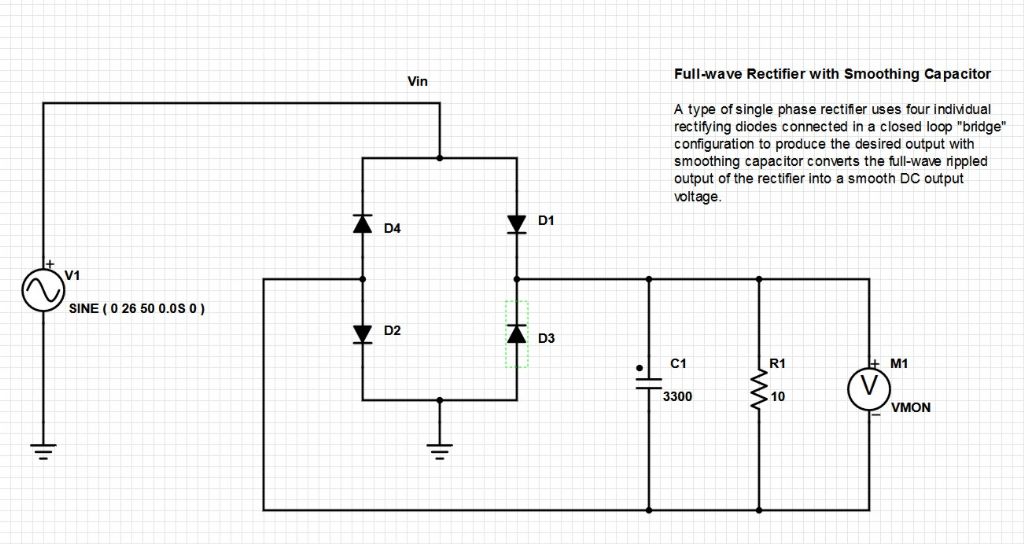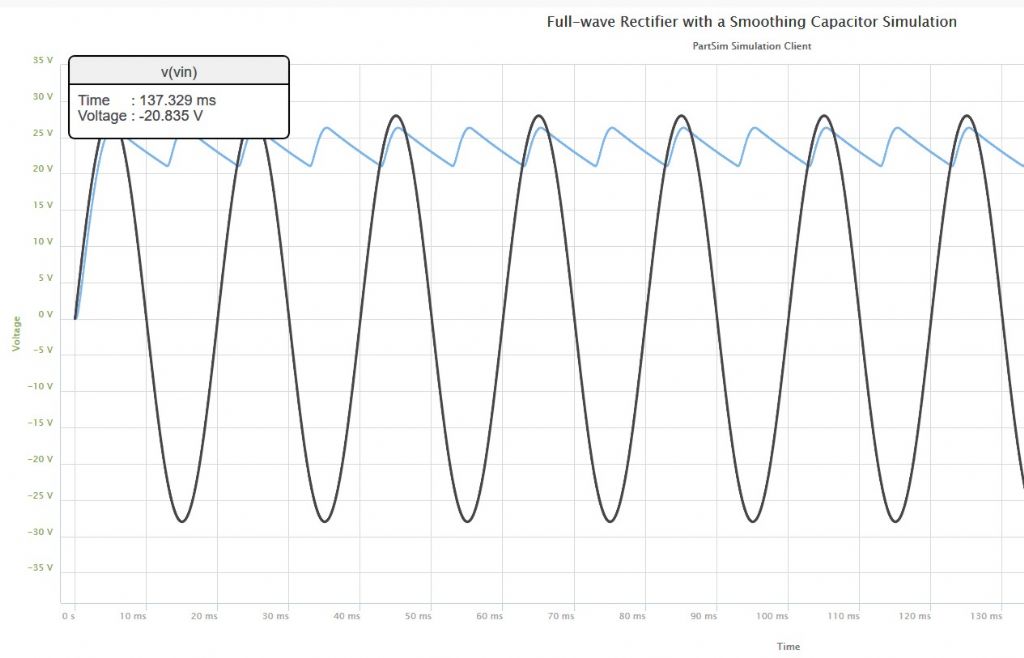I'm most impressed with your simulation, it gives almost the same ripple as my sum. However, the 26V was AC RMS, so with a cap I'd expect 35V DC which would have been challenging for my buck converter. When loaded with 2 off 21W 12V bulbs in series the voltage dropped to 19V, a 27% drop, well above the 10% suggested by SOD.
I found another transformer about the same size which had 14/9/0/9/14 secondaries, and measuring across the 2 off 14 tappings gave 28.1V off load, 25.6 V when drawing 1.7A .This is less than 10% drop. Connecting as centre tap with just 2 diodes into a way too big capacitor gives 18.9V, which is close to the 19.1 you'd expect, but then connecting the bulbs the volts drops to 15.1 at 1.35A, which is too low.
I should have given up then, but I wanted to understand why the DC volts drop was so much higher then the AC. I suspect it might be to do with the fact that the transformer is now effectively giving out short pulses into a very low impedance (capacitor) and so when it is conducting the current is high and so the voltage drop through the windings is high, but if anyone has a better explanation I'm all ears. I forgot to measure the AC volts whilst the DC was connected, but did attach my scope I really don't understand the vertical drop. Again if anyone has an explanation I'd be grateful. At least part fo the joy of making things is learning something new. I did try another set of diodes, didn't help, if anything it got worse. There is very little ripple on the DC, not surprising with my enormous cap. I've now given up, one transformer too high, one too low. I'll buy a complete 24V switch mode supply and connect the existing buck converter to that. I have a linear regulator for the 5V.
Edited By duncan webster on 12/10/2018 00:46:09
Edited By duncan webster on 12/10/2018 00:47:40
 Neil Wyatt.
Neil Wyatt.







